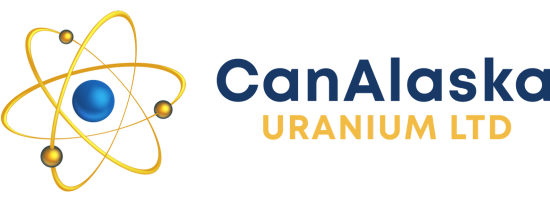Vancouver, Canada, July 15th, 2009 – CanAlaska Uranium Ltd. (TSX.V — CVV) (“CanAlaska” or the “Company”) is pleased to announce that it has executed an Option Agreement (“Option”) with Bayswater Uranium Corporation. (“Bayswater”) to commence exploration of the Collins Bay Extension uranium project (“Project”), situated directly adjacent to, and following the North-East strike of the past-producing uranium mines at Rabbit Lake and Collins Bay, and the current producing uranium mine at Eagle Point in the Province of Saskatchewan (See Figure 1). The Project contains a significant number of exploration targets within the Snowbird and Fife Island areas.
Under the terms of the Option, CanAlaska shall act as the exploration operator and may earn a 51% participating interest in the Project by undertaking a minimum of Cdn$4 million in exploration expenditures within 5 years and issuing a total of 500,000 Company shares to Bayswater over this period. The Company may increase its participating interest in the Project to a 70% level by successfully undertaking a further Cdn$2 million in exploration expenditures over a period of 3 years.
Collins Bay Extension Project
CanAlaska’s prime focus in the current exploration season is to re-visit and drill test the structurally- controlled uranium mineralization intersected in historical (1984) Minatco drillholes MWLD8 to MWLD13. The best of these holes intersected 0.152% U3O8 over 4 metres (over 3 pounds per ton U3O8), along an offset structure on the northern part of Fife Island, in an area designated as the “VIC” zone.

The geological trends mapped in the Eagle Point-Collins Bay uranium mines and surrounding areas extend to the north and east onto the Collins Bay Extension property. Historical exploration dating from the late 1960’s was controlled by large corporations, such as by Gulf Minerals, E&B Explorations, Minatco Ltd (now part of AREVA), SMDC and Cameco. These exploration efforts involved extensive use of then-current geophysical survey techniques and made multiple uranium discoveries, evidenced by uranium mineralization in drill holes in 4 separate areas.

Ten areas of the property produced geological and structural targets. However, a total of only 73 diamond drill holes were drilled on this extensive property throughout these years through to 2008. This amounted to less than one drill hole per 5 square kilometres. This minimal quantity of physical drilling of the significant targets from the early exploration provides CanAlaska an excellent opportunity to test prime exploration targets in a highly productive uranium exploration territory.
The historical drill holes on the Project were not evenly distributed, but were concentrated in clusters within the North Fife area in the north part of the property, the Northern Snowshoe Island — Greenway Peninsula area in the west-center of the property, and the Rabbit Lake North area in the south of the property. These areas remain prime targets for further exploration. Similarly, the target containing the source of the Pow Bay uranium mineralized boulder train, north-east of the Rabbit Lake deposit, is thought to be under the lake-covered portion of the southern part of the Collins Bay extension property.
In all of these areas, the postulated pre-existing Athabasca sandstone has been removed by erosion, and the uranium exploration will be for Athabasca “basement style” unconformity targets, such as the Eagle Point or Rabbit Lake deposits.
In 2007, Northern Canadian Uranium (NCU), the previous operator of the property, carried out a small drill program totaling 1,330 meters in five holes on a newly identified target, intersecting narrow intervals of sub-economic mineralization at the northern end of Snowshoe Island (up to 0.03% U3O8 over 2.0 metres from drill hole CBE07-06. In 2008, NCU carried out 2,014 line-km of modern VTEM geophysical surveys over most of the Project, including the area east of the Pow Bay mineralized boulder train. In late 2007, NCU was amalgamated with Bayswater Uranium, and Bayswater carried out a drilling program in early 2008 consisting of 3,510 m of drilling in 12 drill holes. All these holes interesected favourable lithologies of the basal Wollaston group of metasediments, which host all the basement hosted unconformity related deposits in the eastern Athabasca basin, and one hole interested 710 ppm U in a tourmaline rich pegmatite.
There still remains untested high priority targets on the project area. The geology and target figures (Figure 2) show the strong structural trends and zones of conductor targets on strike and adjacent to the know uranium mine mineralization in the Rabbit Lake and Collins Bay/Eagle Point mineral trends.
President Peter Dasler, commented. “CanAlaska has been focusing its 2009 summer exploration on drill testing near-surface uranium targets on the Northern Rim of the Athabasca Basin, on its Black Lake, Fond Du Lac and Grease River projects. The opportunity to combine these logistical operations on a readily accessible project, which has associated road and power infrastructure, is significant. The Collins Bay Extension Project hosts multiple zones of known uranium mineralization, and on Fife Island, at least one zone of ore-grade values. This latter target has not been investigated since 1984. The publicly available updates on style and geology of the mineral deposits at the current mines in the trend, coupled with the advanced modern geophysical modeling that CanAlaska staff is regularly carrying out, provides us with the knowledge to define very strong exploration targets on the project. It is fortuitous that CanAlaska has the funding and personnel in place to advance this significant exploration opportunity.”
Since 2005, CanAlaska has successfully carried out over 4,000 line kilometres of marine seismic survey mapping within areas of the Athabasca Basin. The Company intends to utilize this extensive experience with seismic surveys to map near shore lake targets peripheral to the know mines and mineral showings. CanAlaska intends to carry out an initial drill program on the Fife Island, “VIC” zone mineralization, commencing in August, 2009.
About CanAlaska Uranium Ltd. — www.canalaska.com
CANALASKA URANIUM LTD. (CVV — TSX.V, CVVUF — OTCBB, DH7 — Frankfurt) is undertaking uranium exploration in twenty 100%-owned and two optioned uranium projects in Canada’s Athabasca Basin. Since September 2004, the Company has aggressively acquired one of the largest land positions in the region, comprising over 2,500,000 acres (10,117 sq. km or 3,906 sq. miles). To-date, CanAlaska has expended over Cdn$50 million exploring its properties and has delineated multiple uranium targets. The Company’s geological expertise and high exploration profile has attracted the attention of major international strategic partners. Among others, Mitsubishi Development Pty., a subsidiary of Japanese conglomerate Mitsubishi Corporation, has undertaken to provide CanAlaska C$11 mil. in exploration funding for its West McArthur Project. Exploration of CanAlaska’s Cree East Project is also progressing under a C$19 mil. joint venture with a consortium of Korean companies led by Hanwha Corporation, and comprising Korea Electric Power Corp., Korea Resources Corp. and SK Energy Co, Ltd. Memoranda of Understanding have also been executed with mining partner East Resources Inc. to commence exploration on the Poplar and NE Wollaston Projects, comprising a potential 100,000 metres of drill testing on each property.
About Bayswater Uranium Corporation — www.bayswateruranium.com
BAYSWATER URANIUM CORPORATION (BAY — TSX.V) is an international uranium exploration and development company. The Company owns several advanced uranium properties in the United States with significant historical resources that may be amenable to ISR and/or conventional mining. As well, Bayswater is the only uranium company to have major landholdings in each of Canada’s most important producing and exploration regions – the Athabasca Basin, the Central Mineral Belt, and the Thelon Basin. Bayswater combines a balanced portfolio of advanced and exploration projects with the uranium expertise of its technical and managerial teams. To capitalize on current market conditions and strong growth of the nuclear industry, the Company is pursuing acquisition opportunities of advanced-stage uranium projects with near-term production potential. Bayswater’s vision is to build a major international uranium company.
On behalf of the Board of Directors
“Peter Dasler”
Peter Dasler, P. Geo., President & CEO
Investor Contact: Emil Fung, Vice President, Corporate Development
Tel: +1.604.688.3211 Email: info@canalaska.com
The TSX Venture has not reviewed and does not accept responsibility for the adequacy or accuracy of this release: CUSIP#13708P 10 2.
This news release contains certain “Forward-Looking Statements” within the meaning of Section 21E of the United States Securities Exchange Act of 1934, as amended. All statements, other than statements of historical fact, included herein are forward-looking statements that involve various risks and uncertainties. There can be no assurance that such statements will prove to be accurate, and actual results and future events could differ materially from those anticipated in such statements. Important factors that could cause actual results to differ materially from the Company’s expectations are disclosed in the Company’s documents filed from time to time with the British Columbia Securities Commission and the United States Securities & Exchange Commission. Not to be construed as an offer to buy or sell securities of CanAlaska Uranium Ltd.

